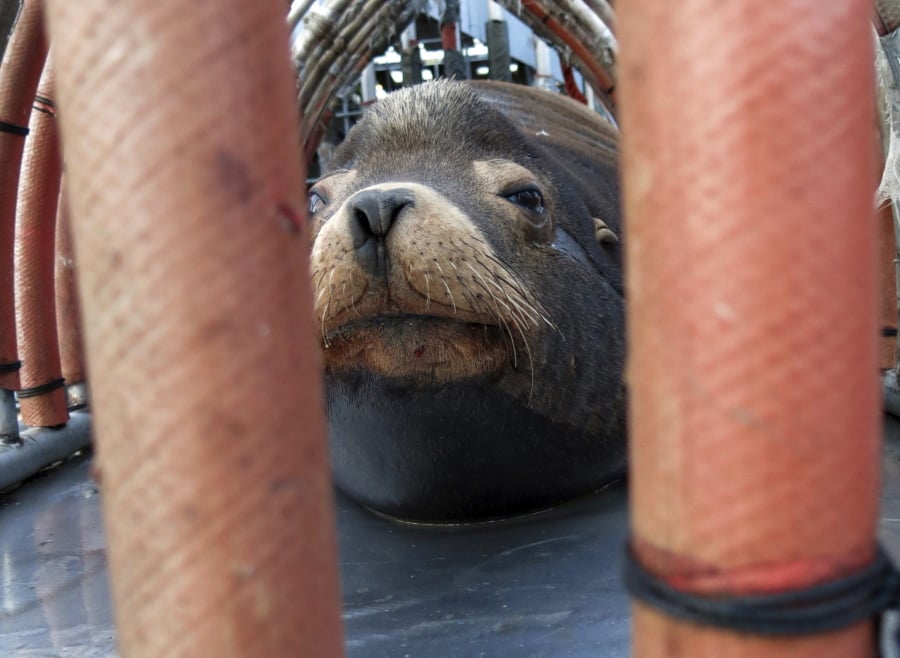PORTLAND — A plan to kill California sea lions to save an endangered run of fish on a river that cuts through Portland appears to be working just months after wildlife officials began euthanizing the giant marine mammals, biologists said Thursday.
The Oregon Department of Fish and Wildlife began killing the sea lions in January after getting permission from federal authorities late last year. They have killed 16 so far, including three on Wednesday, said department spokeswoman Michelle Dennehy.
In the same period, 2,400 steelhead fish have reached the upper Willamette River and its tributaries to spawn this spring — the most in three years and double last year’s tally, the agency said.
Less than 30 years ago, the number of steelhead making that journey was at least 15,000 a year but pollution and the construction of dams on key rivers reduced that number dramatically.
Sea lions have been eating an additional 25 percent of all returning steelhead at that spot in the Willamette River south of Portland, said Shaun Clements, ODFW’s senior policy analyst.
“We’ve definitely been able to reduce predation this year and provide some relief to the fish,” he said. “We’re saving considerable numbers of them.”
Clements added that other factors, such as better conditions in the Pacific Ocean, are also contributing to larger numbers of steelhead making it over the falls this year.
After a weeklong lull, state biologists are now killing a second wave of sea lions that have traveled to the base of the falls to munch on another salmonid species, the spring chinook.
The spring chinook run is also listed under the Endangered Species Act and biologists estimate sea lions are eating up to 9 percent of the returning adults each spring, Clements said. Up to 40 sea lions are preying on the chinook, he said, while only 12 were going after the steelhead.
The adult male sea lions, which weigh nearly 1,000 pounds each, have learned that they can loiter under Willamette Falls, a horseshoe-shaped waterfall south of Portland, and snack on the vulnerable steelhead and salmon as the fish power their way upriver to the streams where they hatched.
Steelhead start life as freshwater trout and then travel to sea from inland rivers, grow to adulthood as steelhead in the Pacific Ocean and then return to their natal river to spawn. They can grow to 55 pounds and live up to 11 years.
The sea lions breed each summer off Southern California and northern Mexico, then the males cruise up the Pacific Coast to forage. Hunted for their thick fur, the mammals’ numbers dropped dramatically but have rebounded from 30,000 in the late 1960s to about 300,000 today because of the 1972 Marine Mammal Protection Act.
With their numbers growing, the dog-faced sea lions are venturing ever farther inland up the Columbia River and its tributaries in Oregon and Washington. The two states have had a similar program in place for years to kill California sea lions that eat threatened and endangered salmon at the Bonneville Dam on the Columbia River.
The latest permit from the National Marine Fisheries Service says the targeted sea lions must have been observed eating at least one steelhead near Willamette Falls between Nov. 1 and Aug. 15 or have been observed in the same stretch of river on two consecutive days in that period.
Individual sea lions are identified by trained observers who look at brands on their back or tags on their flippers.
The animals are being euthanized by a veterinarian by lethal injection in the same way that dogs and cats are put down, Wright said. Their flesh goes to a rendering plant.
Before a sea lion is killed, the state must find out if there is a zoo or aquarium that wants the animal. If so, Oregon wildlife managers must hold the sea lion for 48 hours before killing it.




